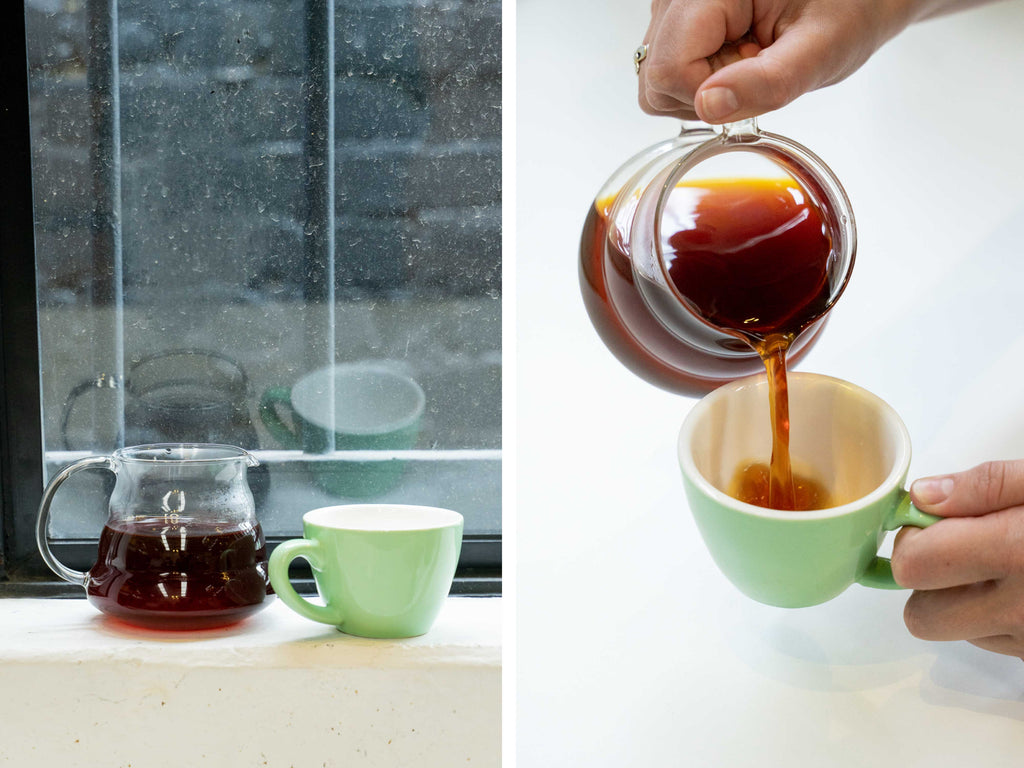


El Madroño represents the cultures, traditions, and essences of the country. No small job for one humble coffee, but this brew really lives up to the challenge.
I’m going to focus a little closer to home to share with you how I came to love this coffee. It was only when I took a second look at El Madroño that my love really began to bloom.
One of my favourite traditions we have here at Padre is cupping. Cupping is one of the best ways observe the tastes and aromas of a coffee, and a great way to share that with other people.

Cupping is our first step when it comes to tasting, assessing, and appreciating any coffee that comes our way. It has taught me about all the nuances of different processes and regions, has helped me define what types of coffees and flavours I am personally drawn to, and expanded my pallet. By far one of the best things about cupping is the way it brings us together!

The production team will cup together as much as we can, and I have learnt so much just from talking through our findings. It is a real treat when we can get the rest of the office here at HQ involved, and recently we had the amazing opportunity to host a cupping for the staff across all our cafes!
We gathered together, from far and wide, to taste all of our single origins. I started working at Padre during lockdown, so it was a thrill to all be in the same room, brought together by our love of coffee.
We put all our single origin coffees on the cupping table. I thought I had a pretty solid understanding of our coffees, and I had the run down on what I liked best. I was rushing my way through the tasting to get to some funky natural coffees… when I was stopped in my tracks.

This stunning, crisp, washed coffee completely took me by surprise. I was pulled in by bright tangerine acidity, but I stayed for the comforting richness of dark chocolate and sticky toffee. I was forever changed. I grabbed myself a bag of El Madroño that day, and now I have it stocked on my shelf at home at all times.
V60 Recipe
Preparation

Preheat your kettle to 96 degrees with filtered water and while your kettle boils, weigh and grind your coffee and set aside.

Fold your filter paper along its seam and place within V60 dripper. Sit the dripper on top of your vessel (cup or server) and place on top of your scales.

Once boiled, pour water over the filter paper to get rid of any unwanted paper residue and to heat your brewing vessel. Discard the water left in the vessel.

Add your coffee to the dripper, giving the cone a light shake to ensure a flat bed of ground coffee.
Tare off your scales and you're ready to go!

00:00
Start your timer and evenly pour 30ml of hot water over the coffee, I like to move the kettle in a small circular motion, working my way from inside to out, ensuring the grinds are fully saturated.
You will start to see bubbles in the saturated coffee, this is the blooming process and will make for an even extraction and enhance those lovely, sweet flavours. Allow to sit for 30-35 seconds.

1:30
Start your second pour with the remaining 70ml of water using the same technique as the last. Let the water run completely through the coffee and filter paper until drained.

3:00
Enjoy your coffee!
Espresso
Domestic espresso recipe (using a Breville Bambino)

On the Slayer LP we use 22g of coffee and aim for a yield of 38g, however your machine and set up will determine what dose (and therefore, yield) you should aim for. Some domestic machines have 20-22g baskets, however some will only be able to hold 16-18g. Use the ratio to adjust the espresso recipe.
Padre Coffee acknowledges the Traditional Custodians of Country throughout Australia and their continued connections to land, sea and community.
We pay our respect to Elders past, present and future, and extend that respect to all Aboriginal and Torres Strait Islander Peoples.